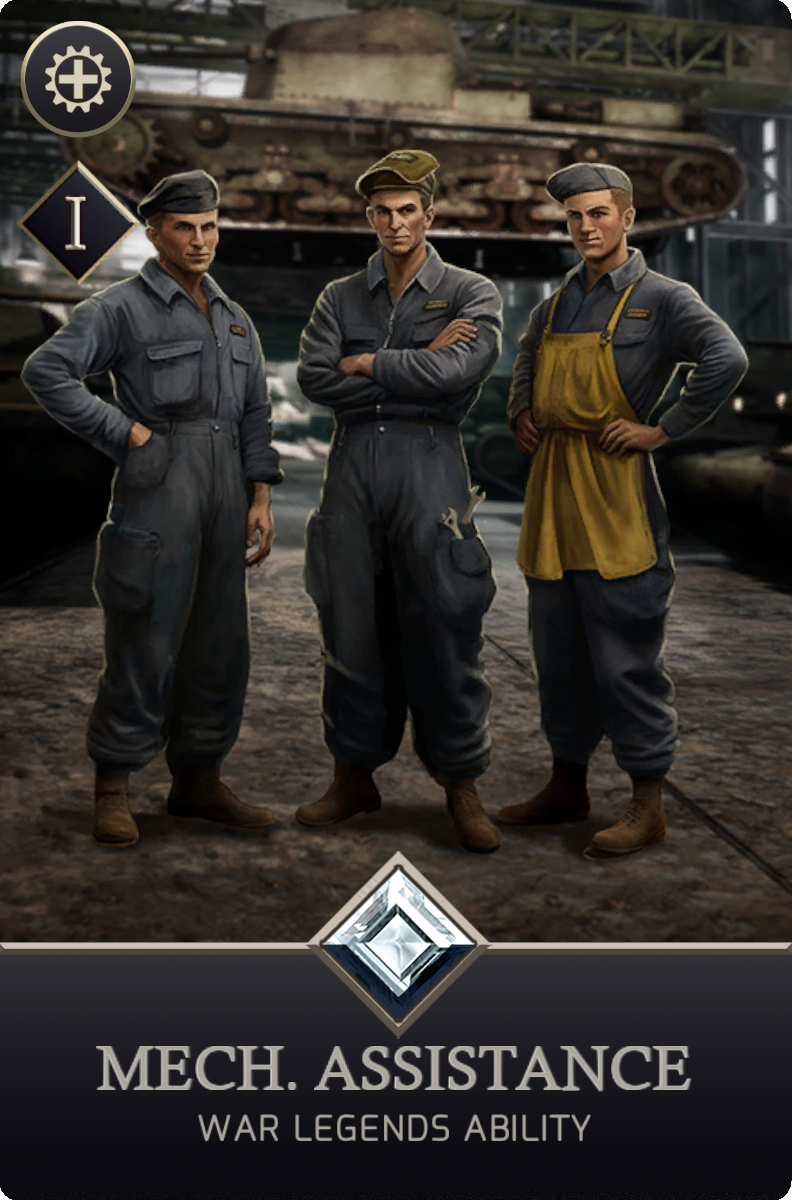


Ability Background
Tanks damaged during the advance remained in their own territory, so after being located, they were prepared for evacuation. The tracks and suspension were studied for a more efficient evacuation. If the sprockets and some of the bogie wheels were badly damaged, the tracks were cut and placed around the tensioning wheel and the bogies in service. Once the suspension was working again, a towing vehicle was hitched to the tank so that it could be towed to a repair area.
The Germans became aware even before the confrontation that a good maintenance service for the tanks was indispensable. Centralized maintenance services were only planned for minor repairs to the tanks. Tanks with more severe damage were to be sent to factories located in the hinterland. During the Polish campaign this system worked very well. All vehicles that made it back to the factory were repaired. This brought their combat capability back to full strength.
In Africa, Rommel defined a daily maintenance system, in which each unit's commanding officer was responsible for the maintenance of artillery pieces, tanks and weapons in general. The British, on the contrary, suffered many mishaps precisely because of the opposite, besides the support units were located in the Divisions and did not accompany the subordinate units.
The users of the vehicle had to use a notebook where the maintenance was written down. What fuel was used, what parts had been replaced with, etc. These also had to be reviewed by their respective senior commanders.








